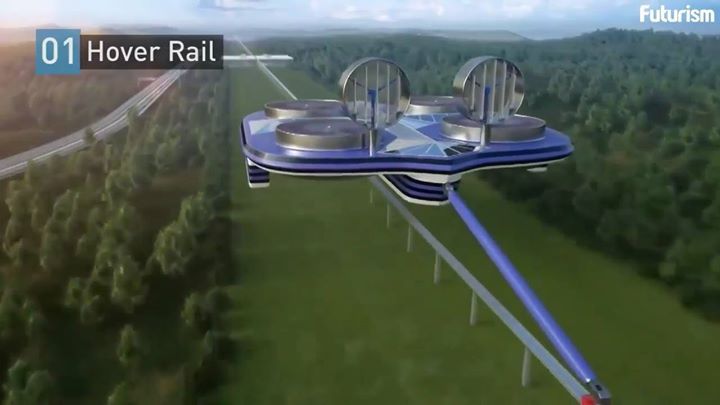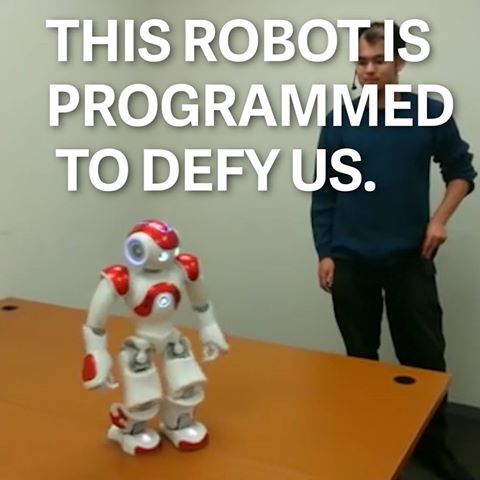Future of Transportation — Concept Vehicles.
Here’s how the next generation will travel — flying cars, hover rails, the hyperloop, and more…

Future of Transportation — Concept Vehicles.
Here’s how the next generation will travel — flying cars, hover rails, the hyperloop, and more…

https://www.youtube.com/watch?v=VVA34lM3-OY&feature=youtu.be
Derek Muller of ‘Veritasium’ explores the impact of the Northeast blackout of 2003 and the innovations in energy that are essential to keeping the lights on. For more on the future of energy, check out Breakthrough’s ‘Energy on the Edge’ episode on the National Geographic Channel airing Sunday 11/29 at 9/8c.
Check Out Veritasium’s ‘How Long Will You Live’: http://bit.ly/21fLyDN
Continue reading “Veritasium Explores The Future of Energy — GE” »

https://www.youtube.com/watch?v=Q9Ec7AvnufQ
Ray Kurzweil: https://en.wikipedia.org/wiki/Ray_Kurzweil#Health_and_aging
Raymond “Ray” Kurzweil is an American author, computer scientist, inventor and futurist. Aside from futurology, he is involved in fields such as optical character recognition (OCR), text-to-speech synthesis, speech recognition technology, and electronic keyboard instruments. He has written books on health, artificial intelligence (AI), transhumanism, the technological singularity, and futurism. Kurzweil is a public advocate for the futurist and transhumanist movements, and gives public talks to share his optimistic outlook on life extension technologies and the future of nanotechnology, robotics, and biotechnology.

https://www.youtube.com/watch?v=91M98WRqHJQ
Humai, a Los Angeles-based tech company, is hoping to bring back the dead within 30 years. A Los Angeles-based technology company has a goal of bringing dead people back to life within the next 30 years. Humai’s official website states that artificial intelligence and nanotechnology are being used to analyze human processes, and the creation of “an artificial body” is in the works. Once the artificial body has been perfected, the member’s brain, which will have been preserved through cryonics after death, will be implanted to direct movement and function. Helping the integration will be the extensive information the company gained while tracking each person for years during his or her life, according to the company’s founder and CEO Josh Bocanegra. An artificial intelligence app will retain the voice, personality, and behavioral patterns of each person and deploy as needed. This app is expected to launch among the membership by 2017. Aiding in this pursuit is the nanotechnology Humai is assisting in developing, which “will repair the cells destroyed in the brain after death.” The company, which employs five people total, is thus far self-funded but may be open to investments in the near future.
Researchers from Stanford have advanced a long-standing problem in quantum physics – how to send “entangled” particles over long distances.
Their work is described in the online edition of Nature Communications.
Scientists and engineers are interested in the practical application of this technology to make quantum networks that can send highly secure information over long distances – a capability that also makes the technology appealing to governments, banks and militaries.
A new method of mining asteroids for rocket fuel and water was successfully tested at White Sands Missile Range Nov. 13.
Interesting…
To suggest that quantum mechanics and gravity are on the verge of being reconciled would be, to the physics world at least, as significant as the discover of splitting the atom. While splitting the atom might have led to the nuclear bomb, it also led to the technology of nuclear power, i.e. nuclear fission, which, if harnessed properly, creates a renewable and sustainable energy resource. The problem has always been that quantum mechanics — the rules that govern sub-atomic particles — and gravity, the rule that governs mass as we know it (the stuff we can touch and feel), do not agree with each other. The question has always been, what is it that “unifies” these two theories? Is quantum mechanics God playing dice, as Einstein suggested?
“God doesn’t play dice with the universe.”
Yeah that’s right, this is indeed a beating human heart in a box. It just seems to look a lot like Frankenstein, but this is probably one of the big revolutions that can definitely increase the amount of heart donors.
The system consists of a sterile chamber in which the heart is kept safe, oxygen supply and a couple of tubes that can be used to deliver blood and nutrients. This device is giving doctors the ability to use hearts that first couldn’t be used.
At first only heart beating donors could donate their hearts, so this boils down to the fact that only brain-dead donors we’re able to donate theirs. This is due to the fact that after your death the condition of your organs begins to decrease. Therefore it can be pretty dangerous to ‘install’ a new heart in a living patient.

Researchers are teaching this robot how to reject our orders. The results are ominously cute.
New legislation and interest from a number of private ventures could lead to extraction of valuable minerals from asteroids—and sooner than you might think.
STAFFBy Richard Yonck on November 24, 2015 3.
